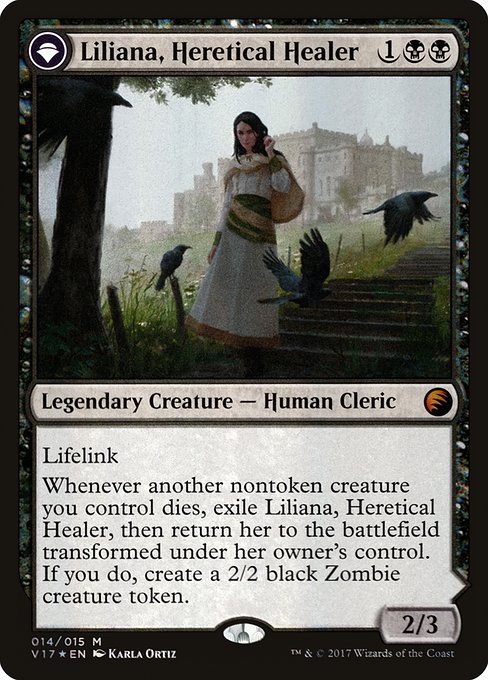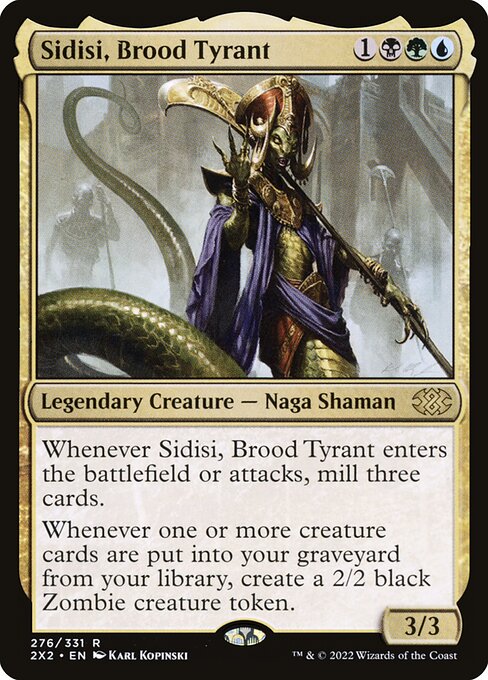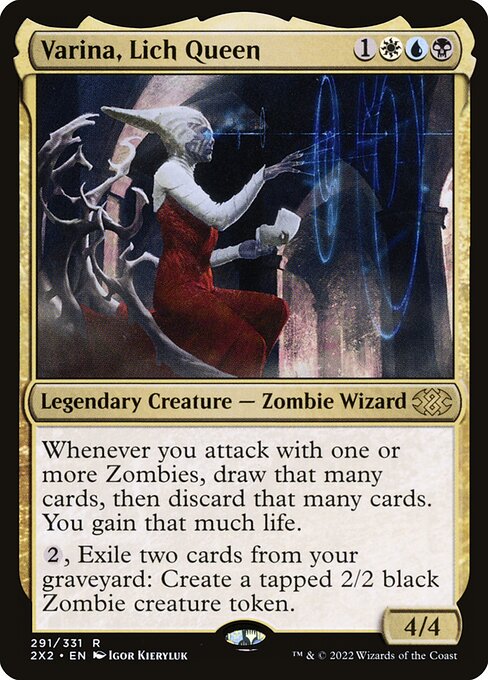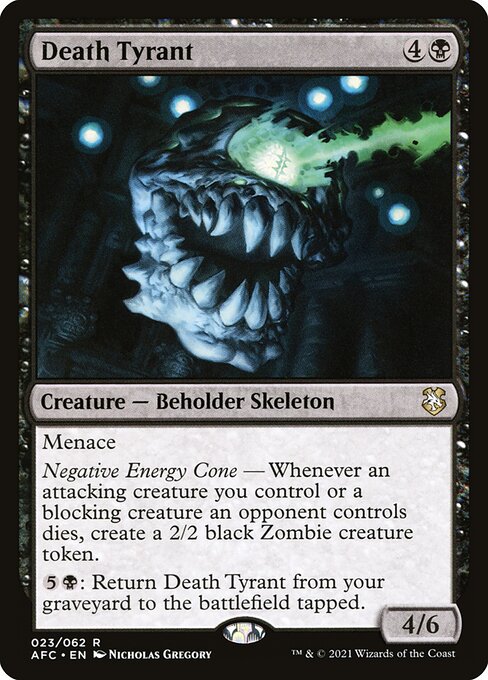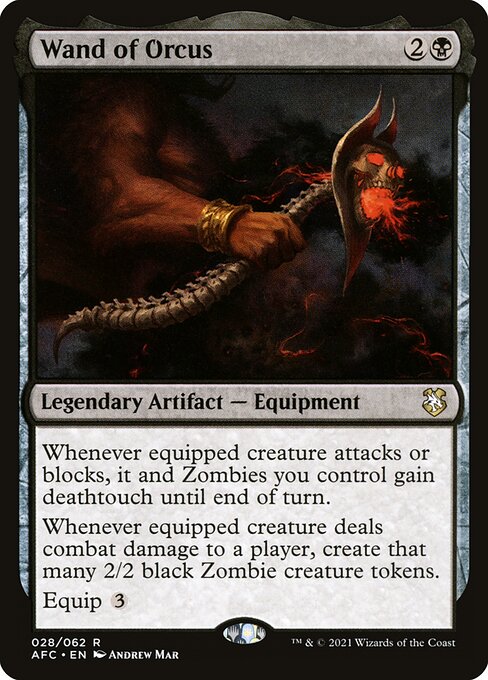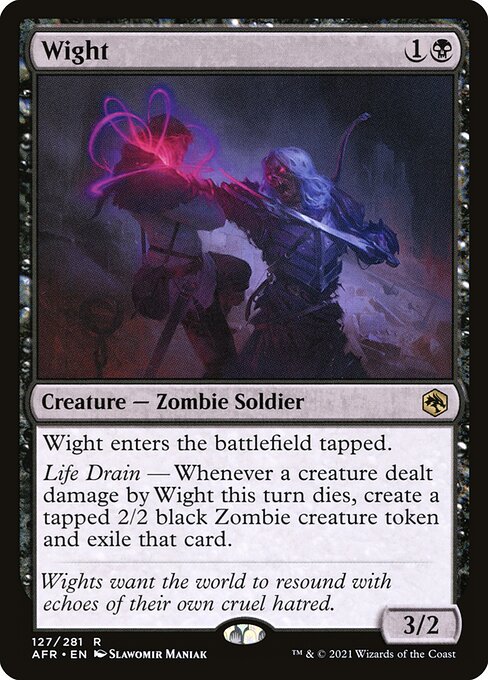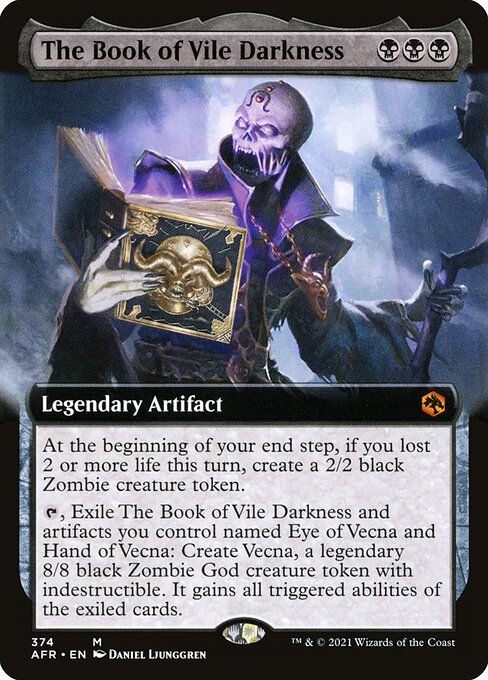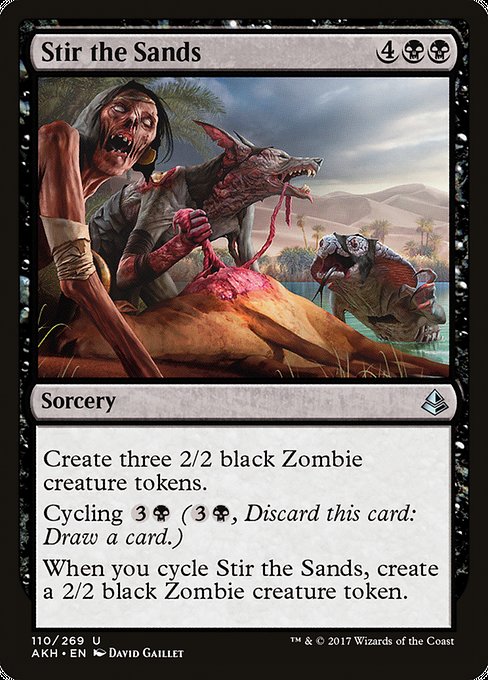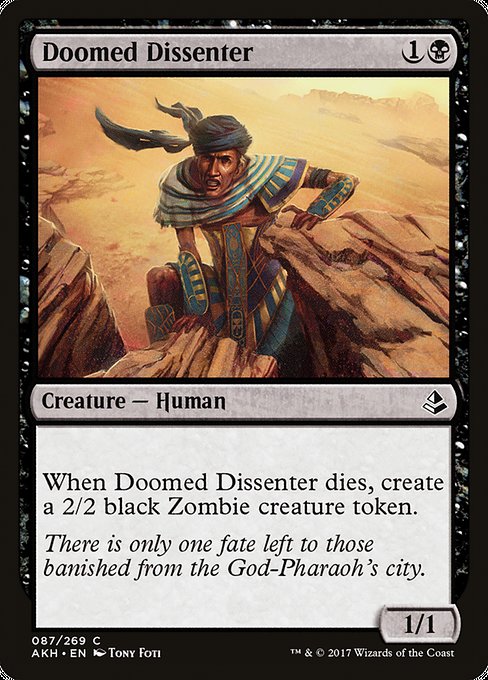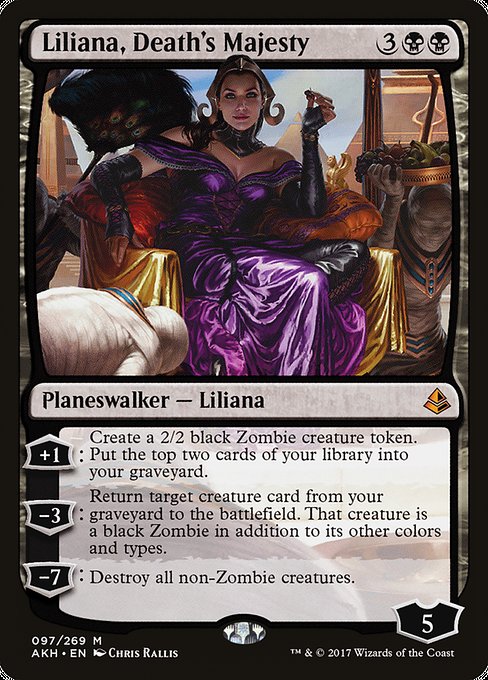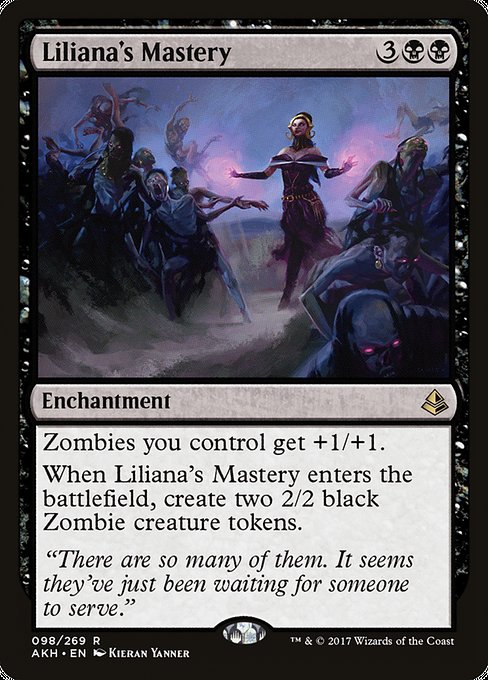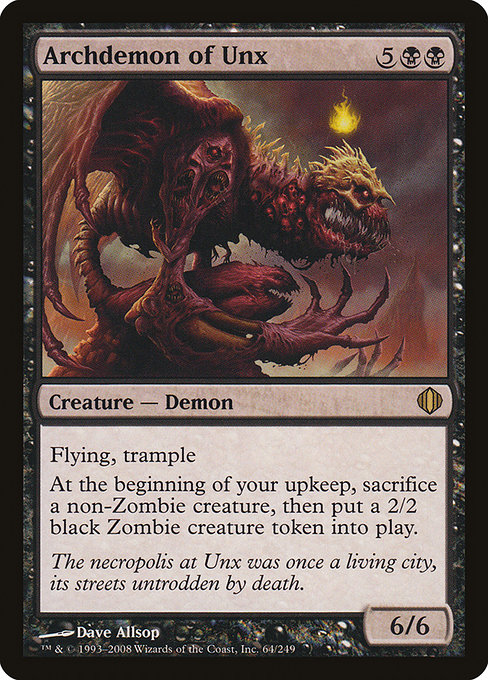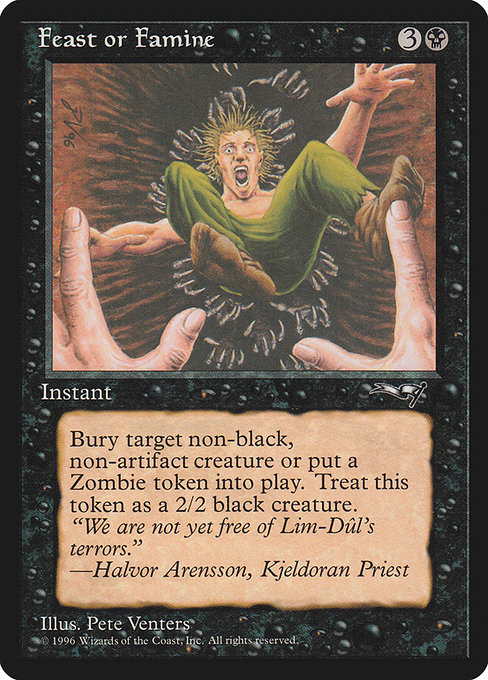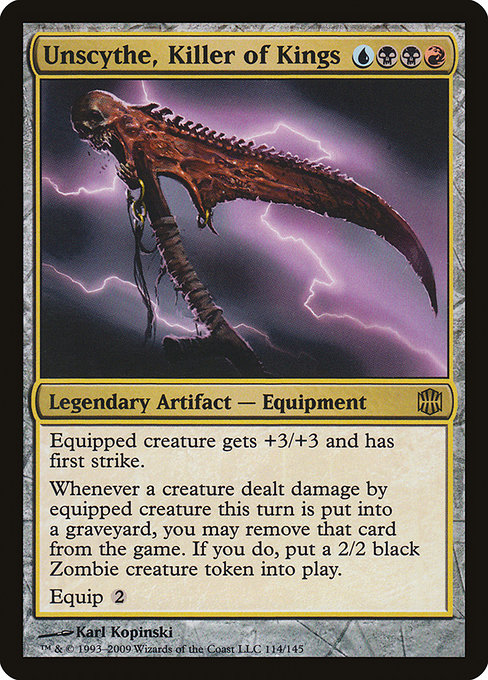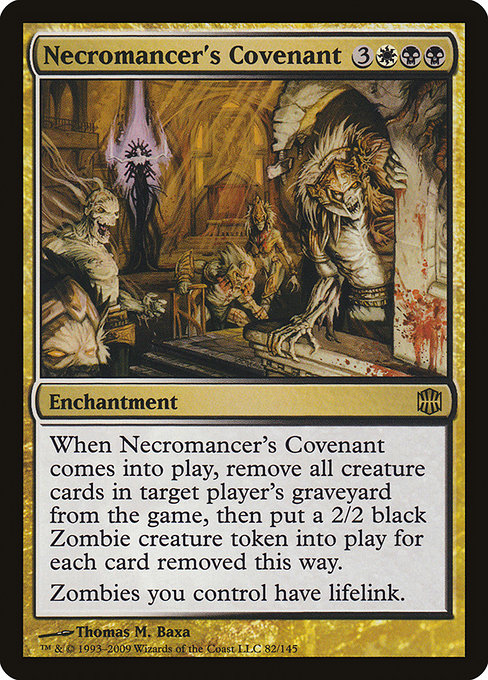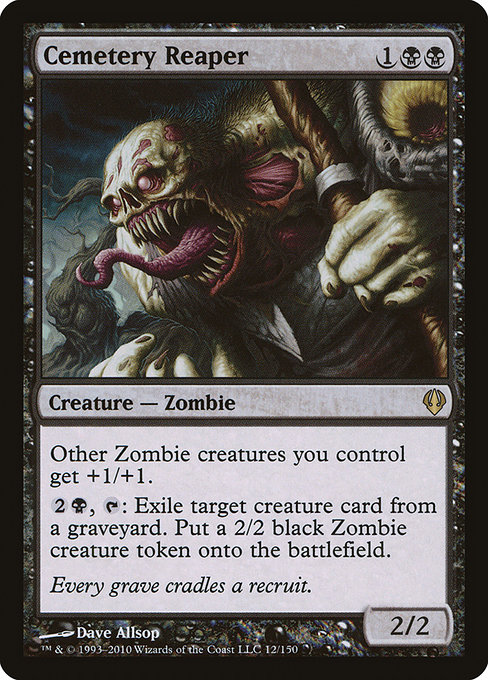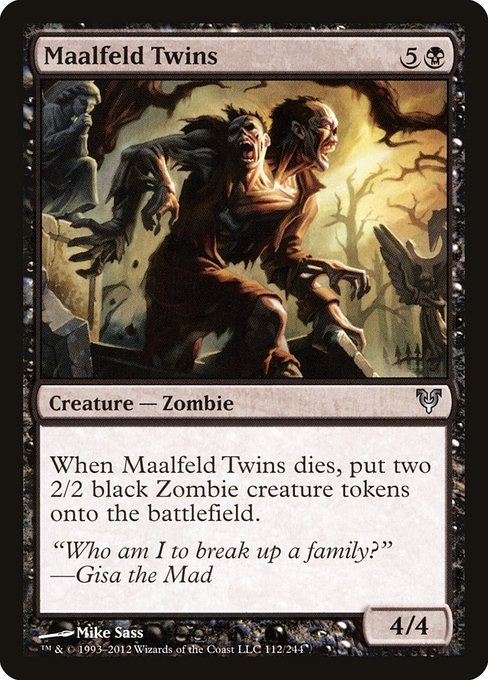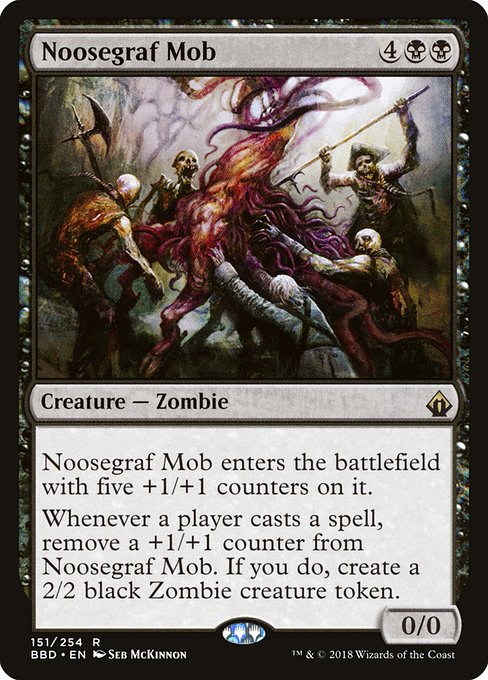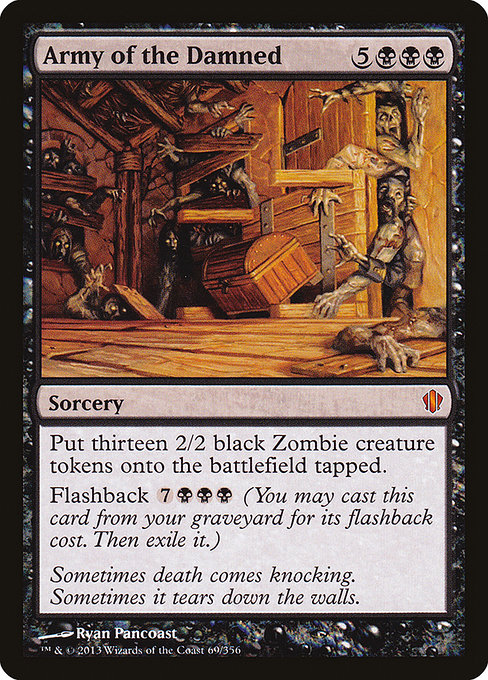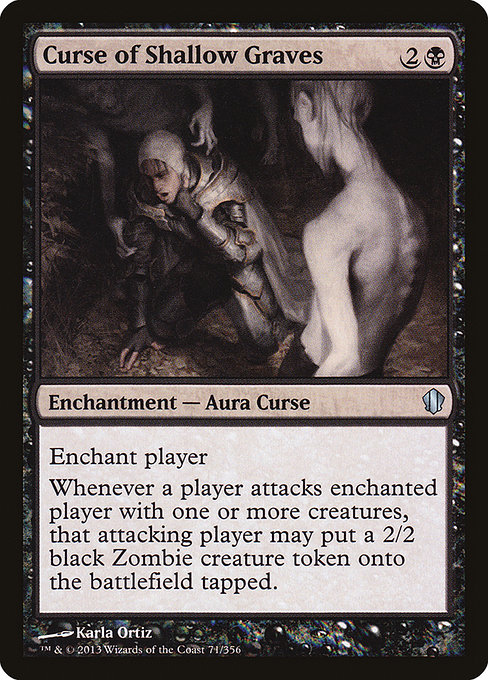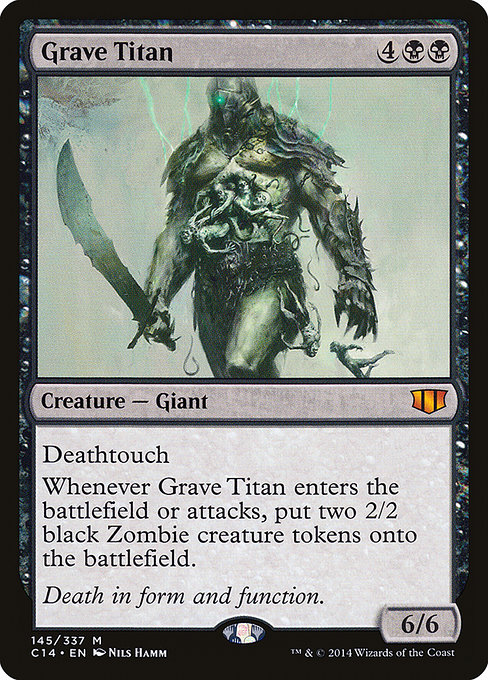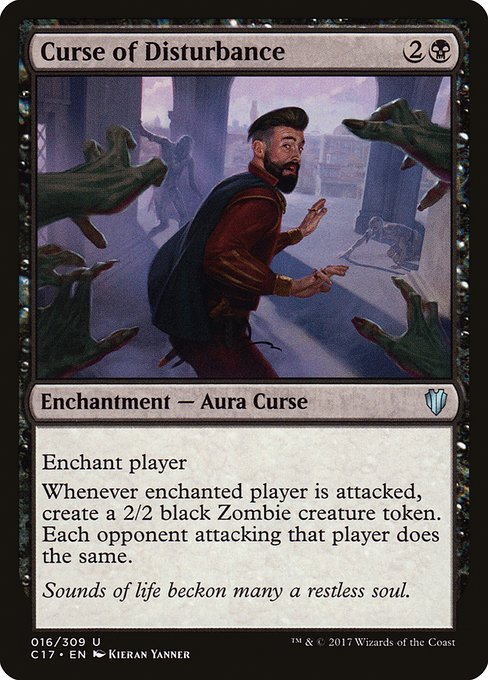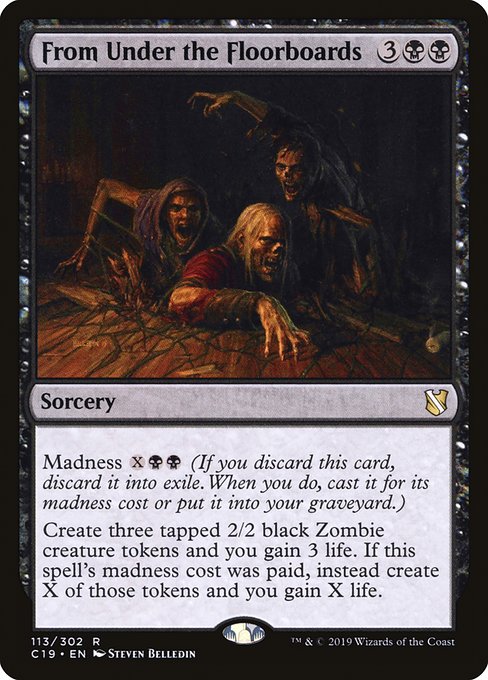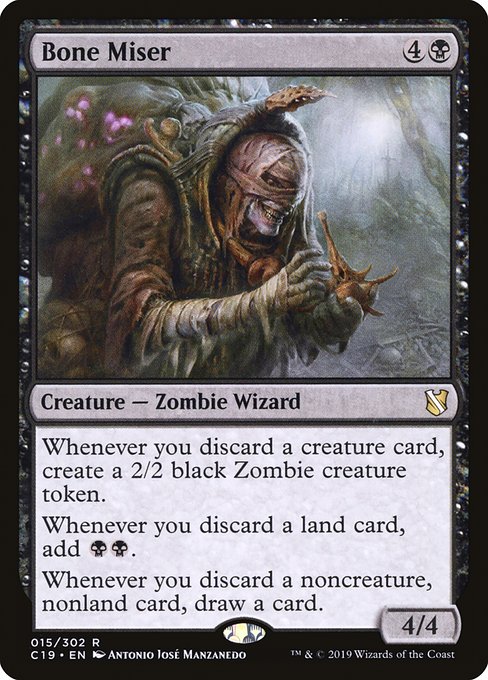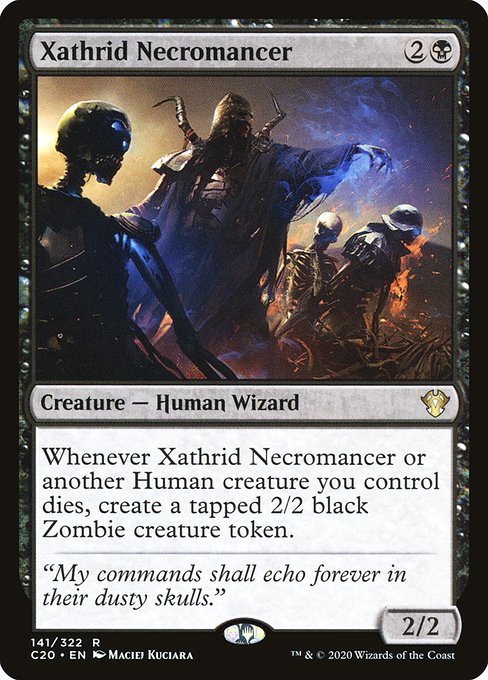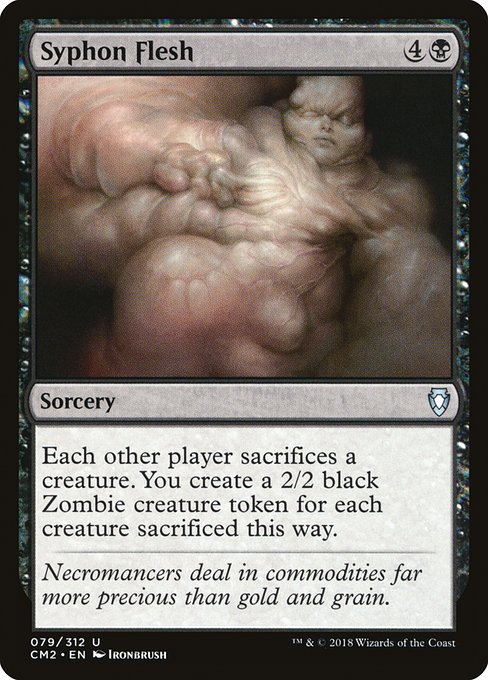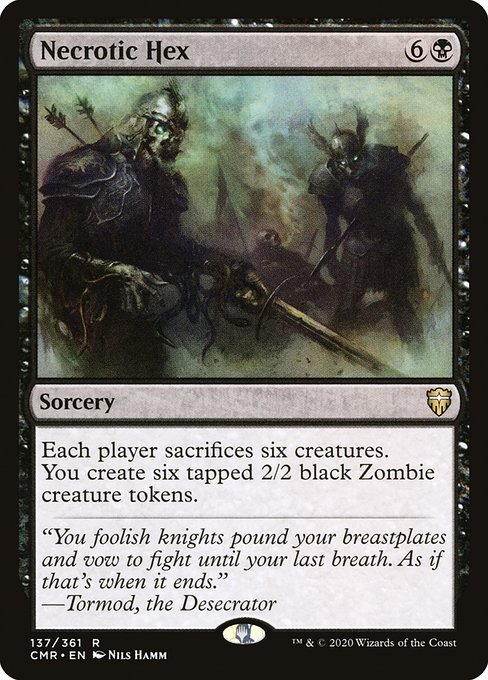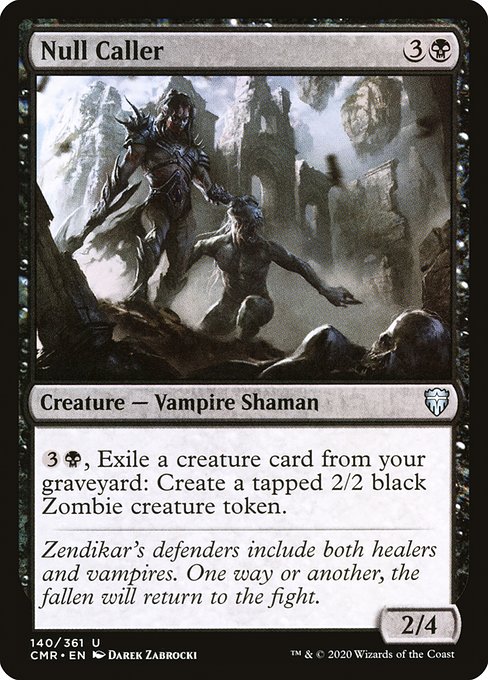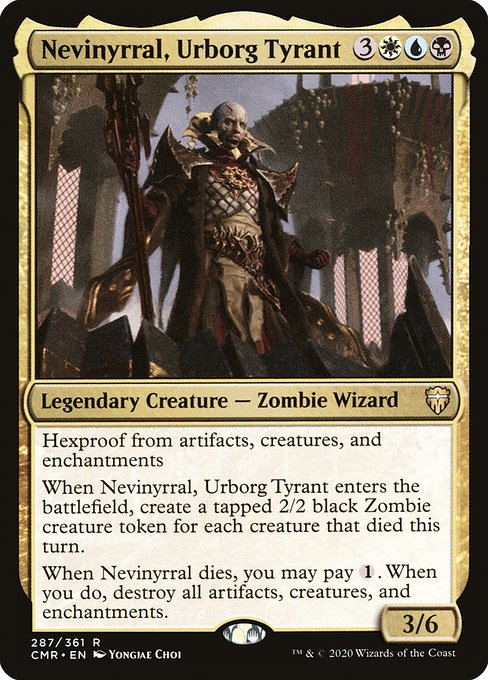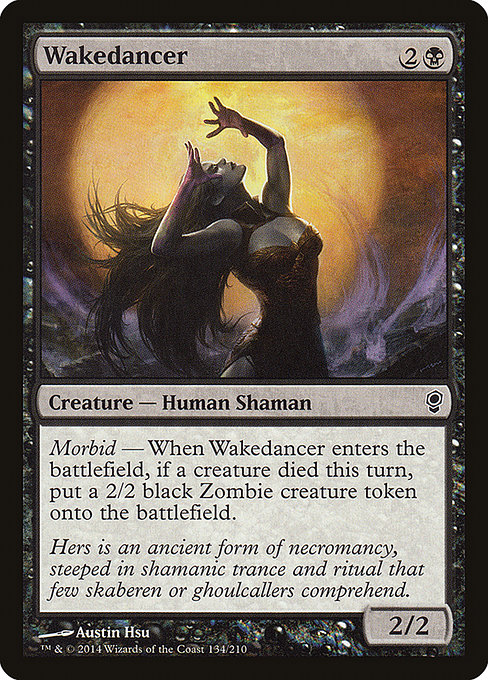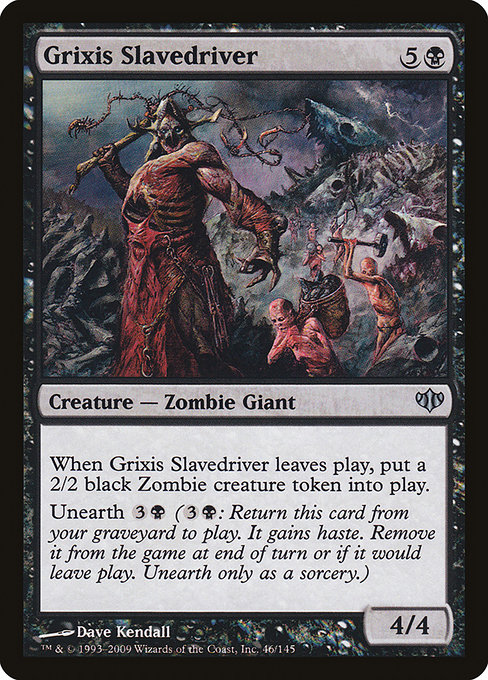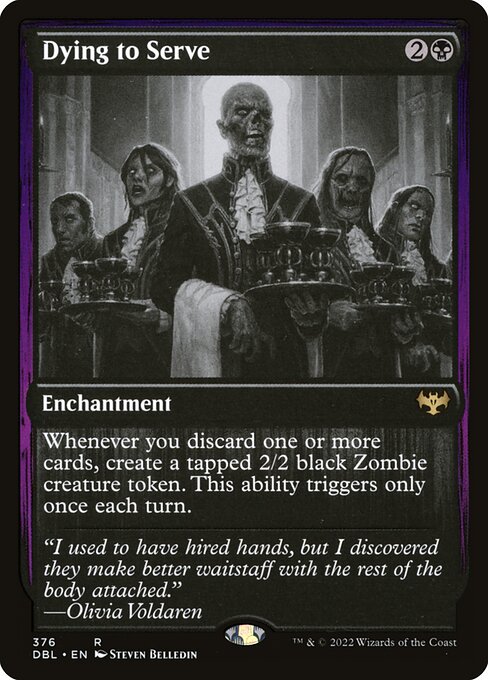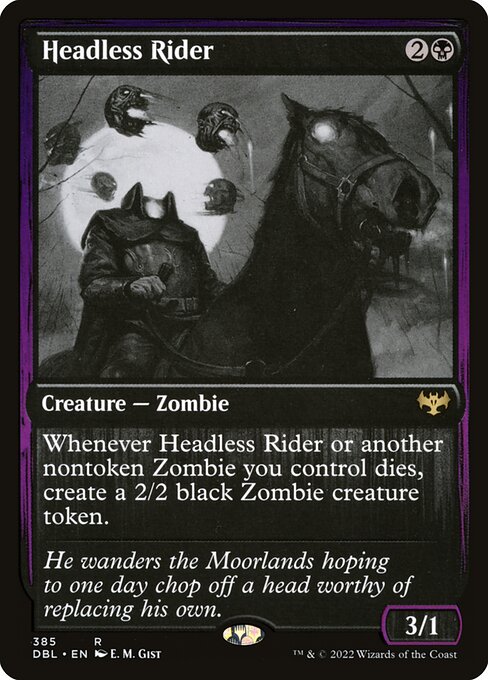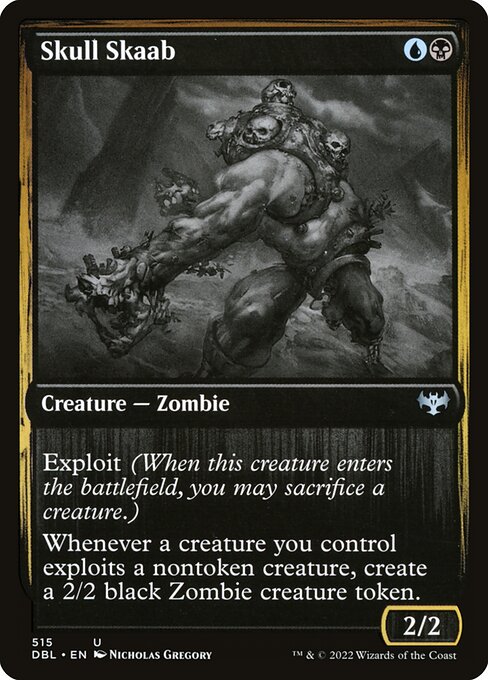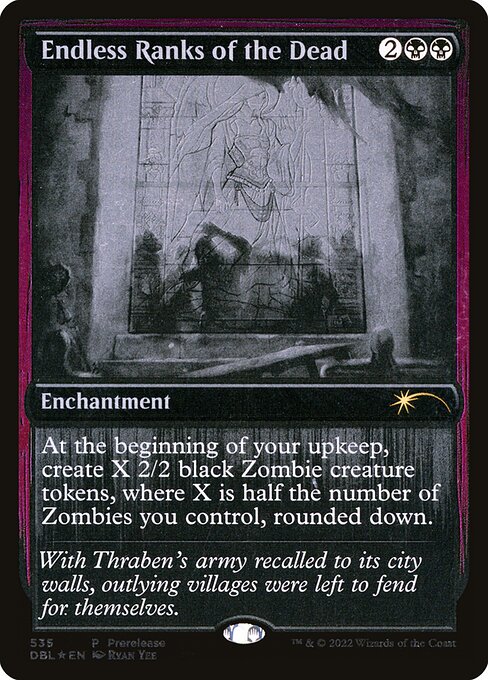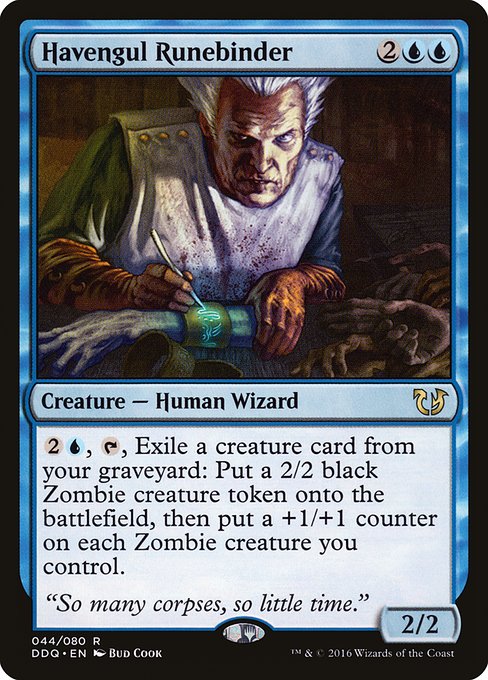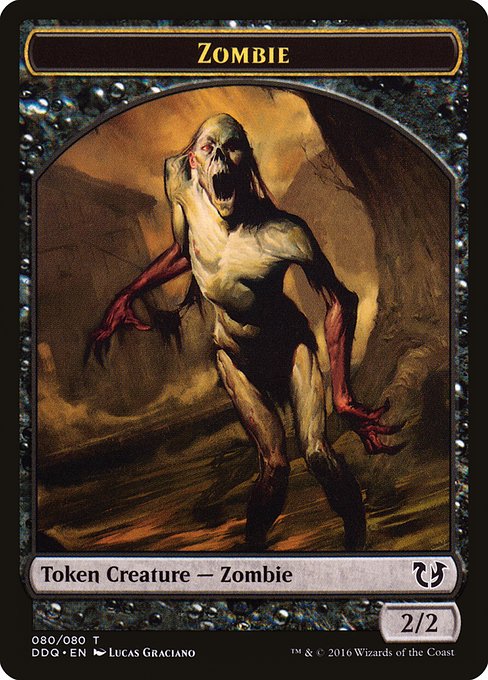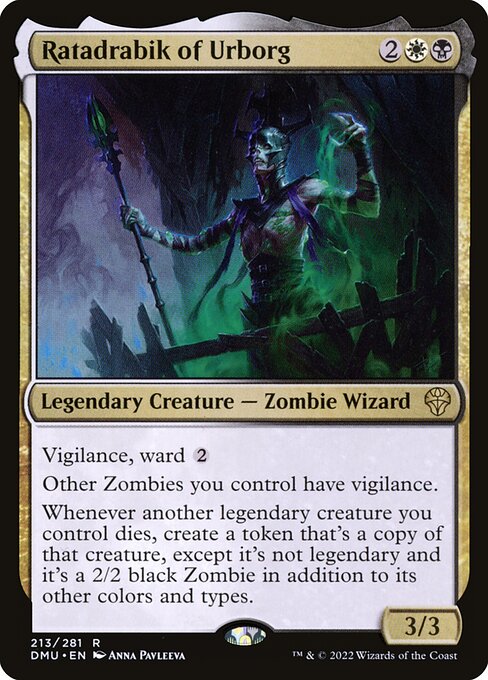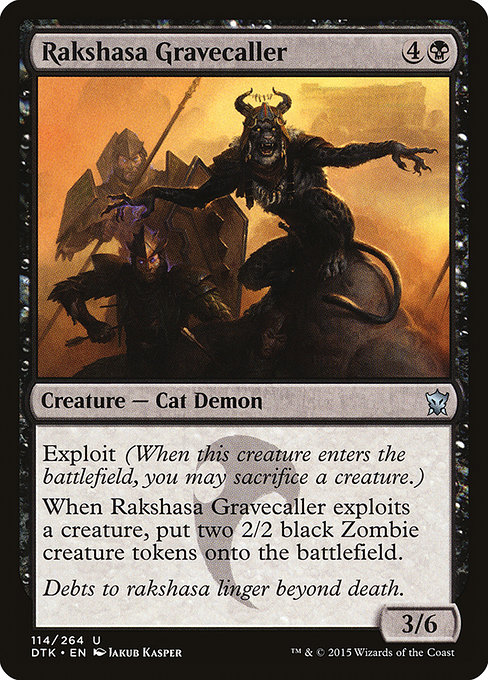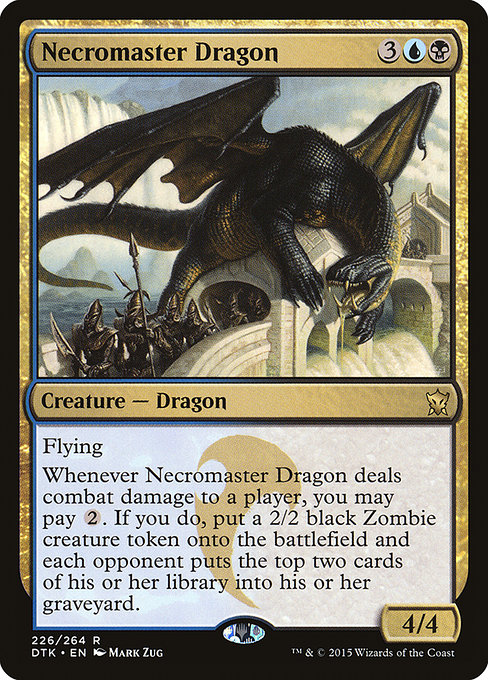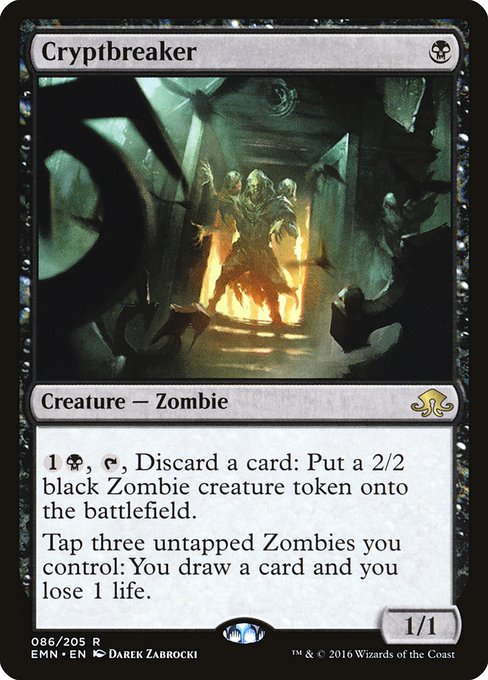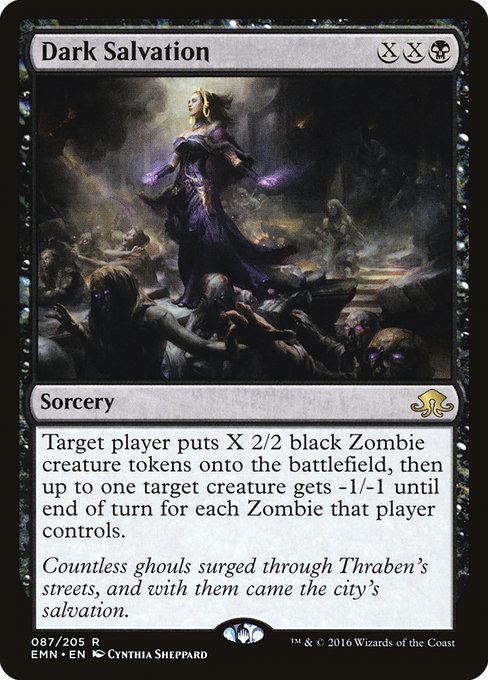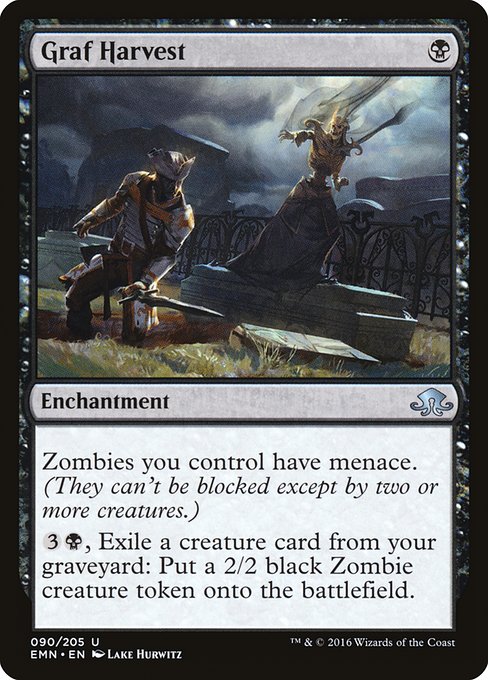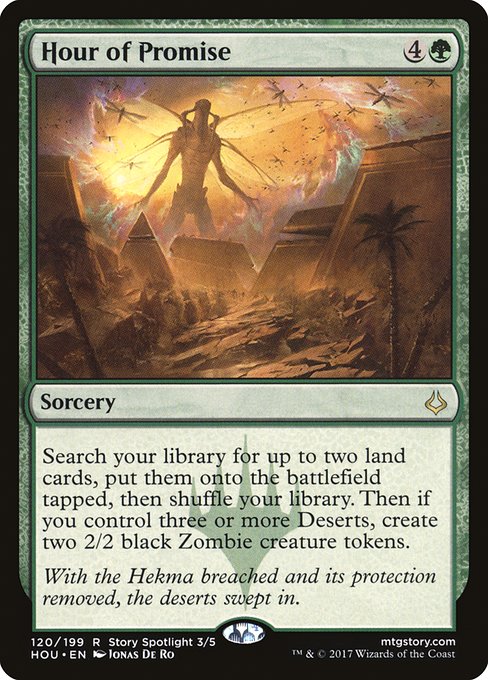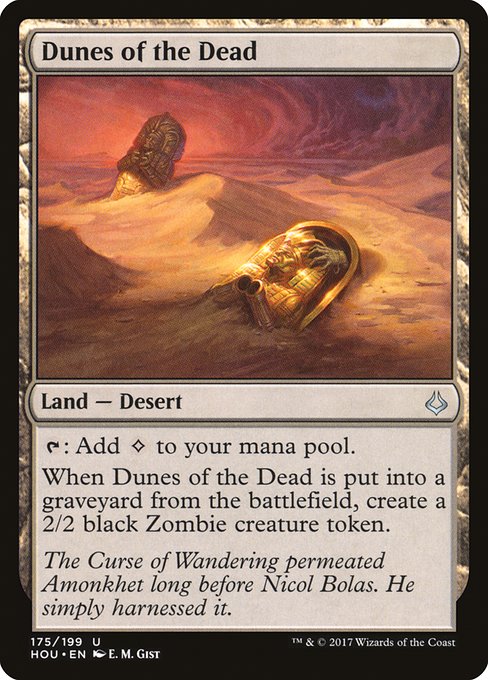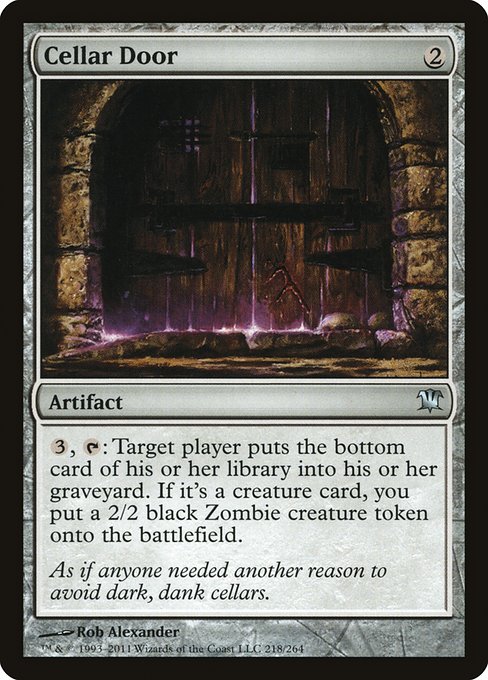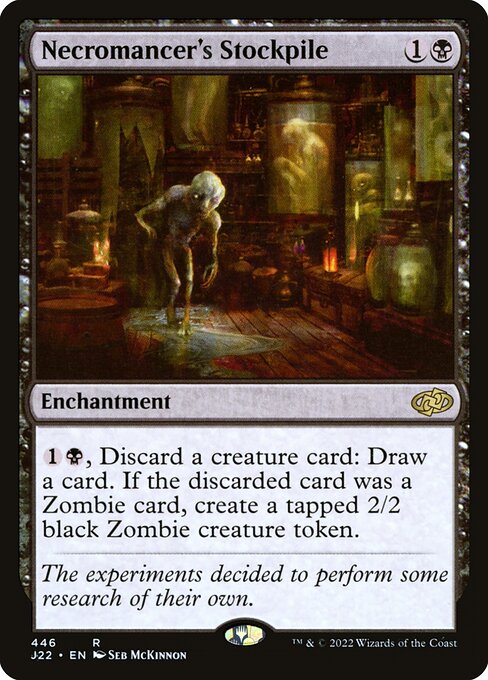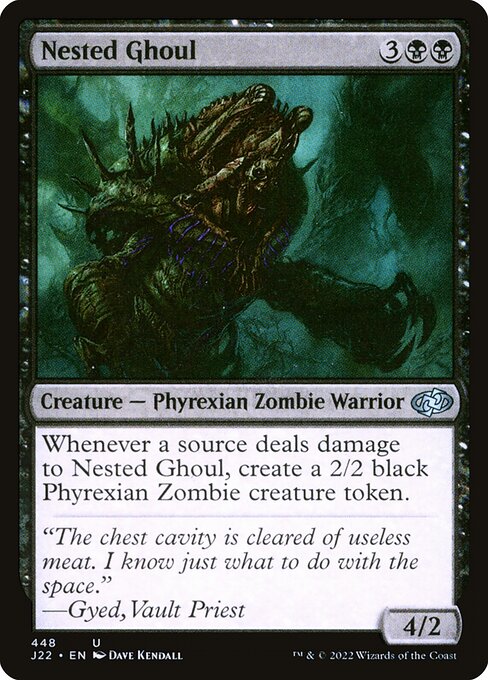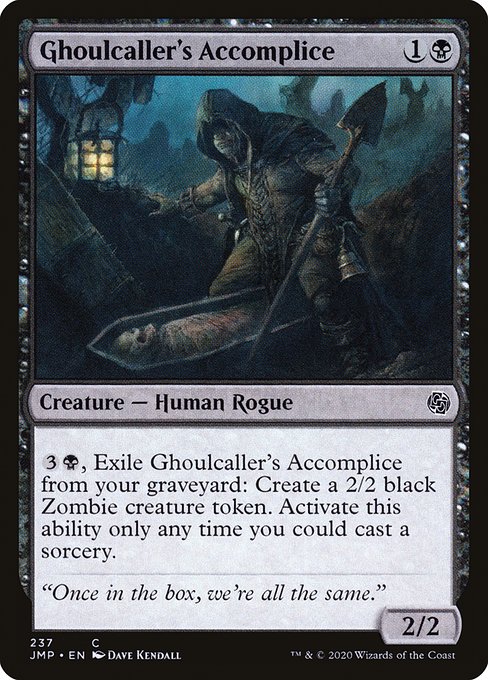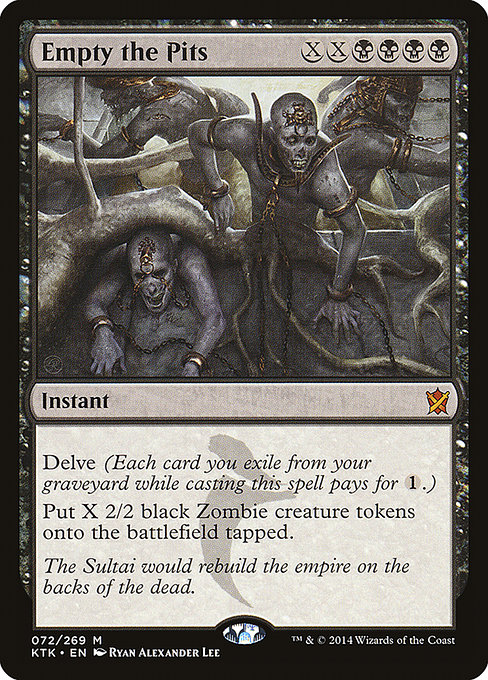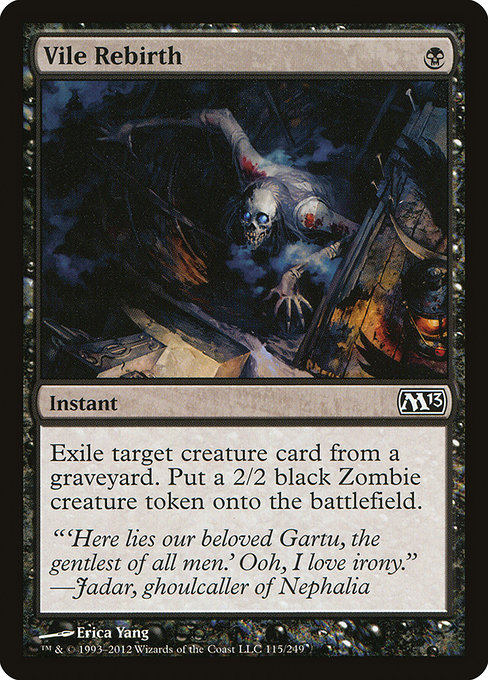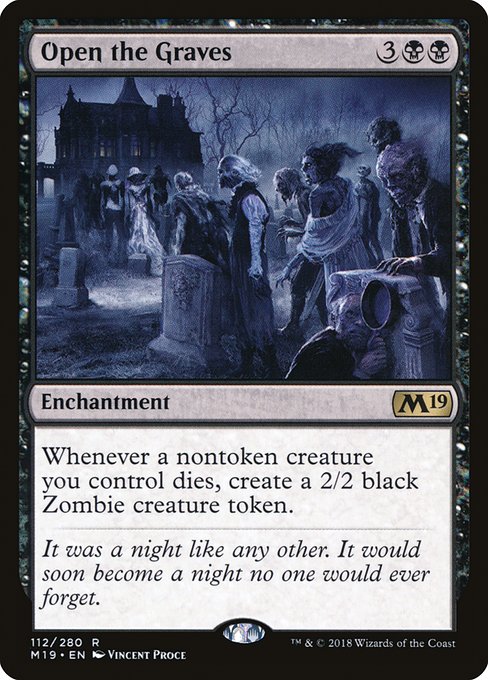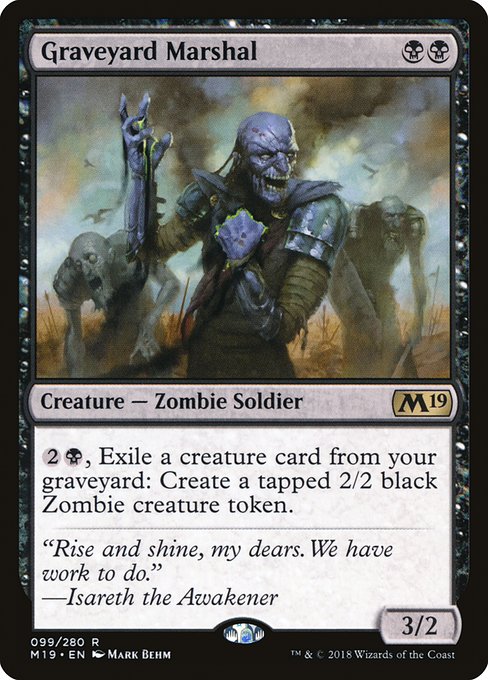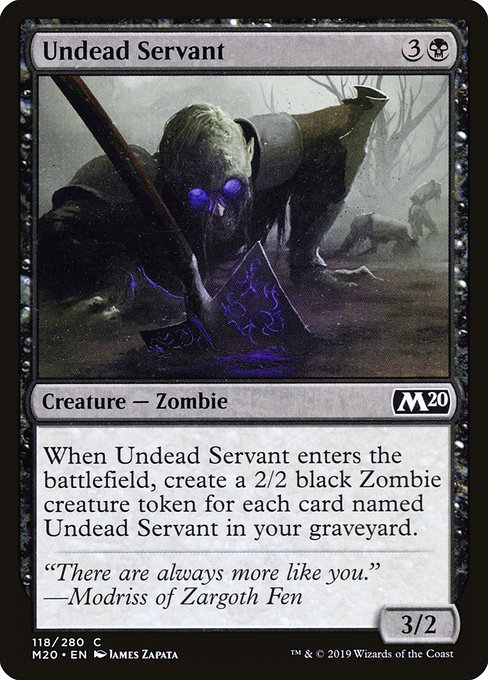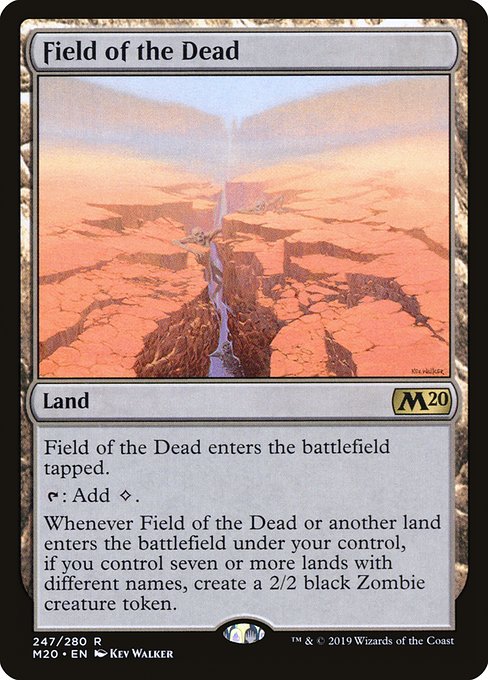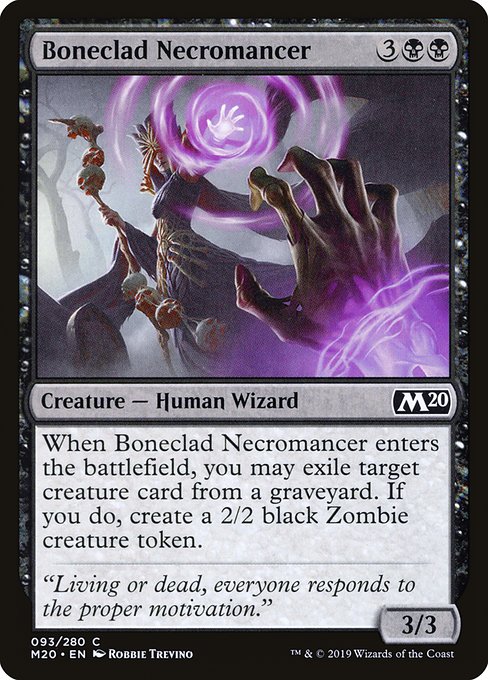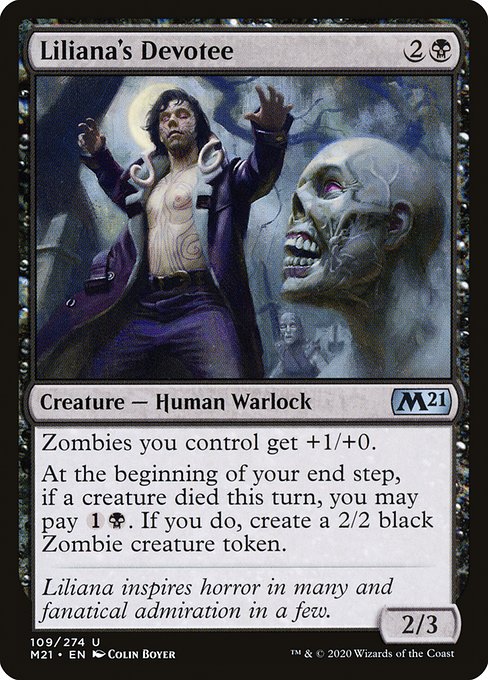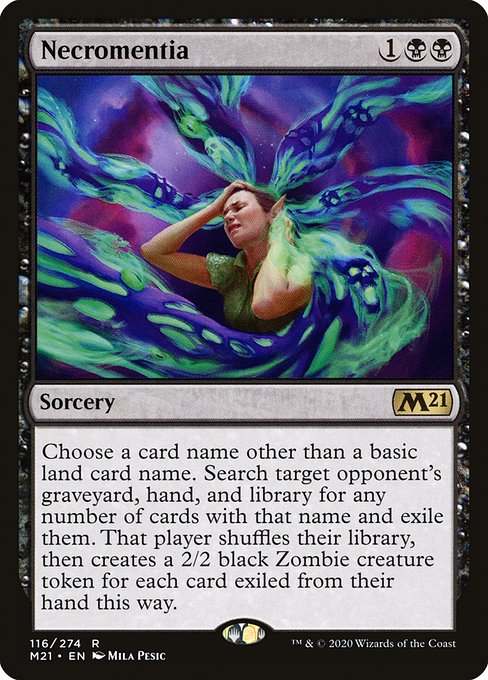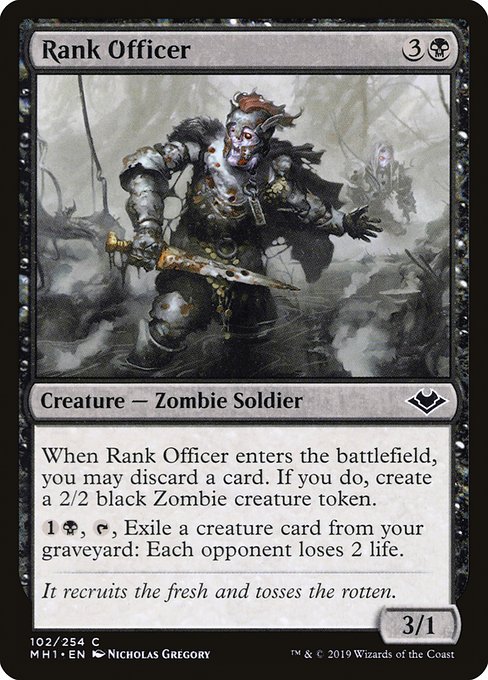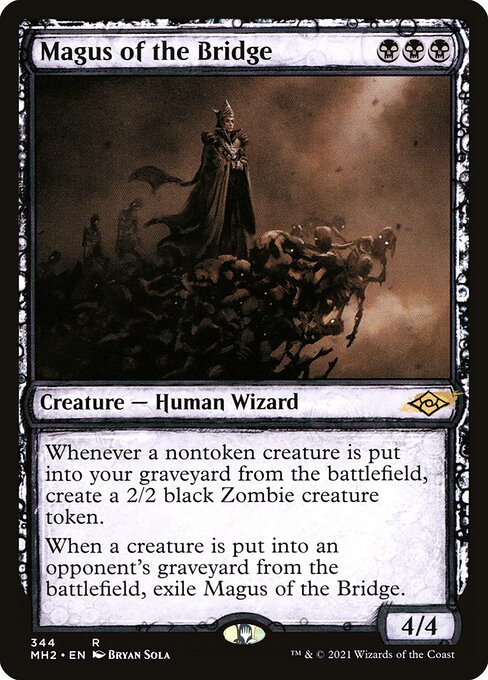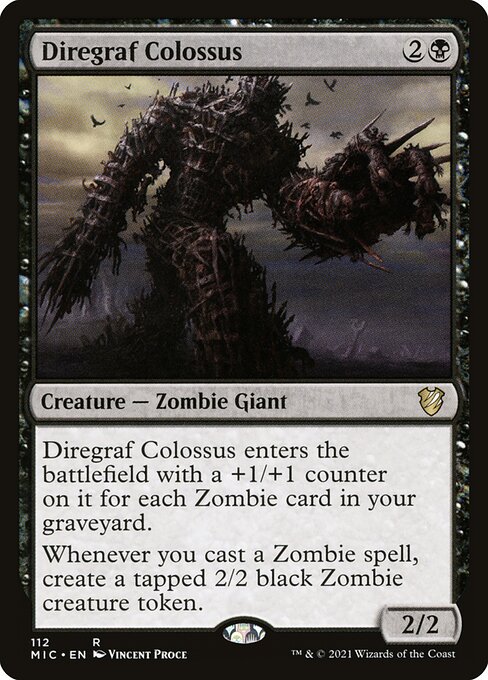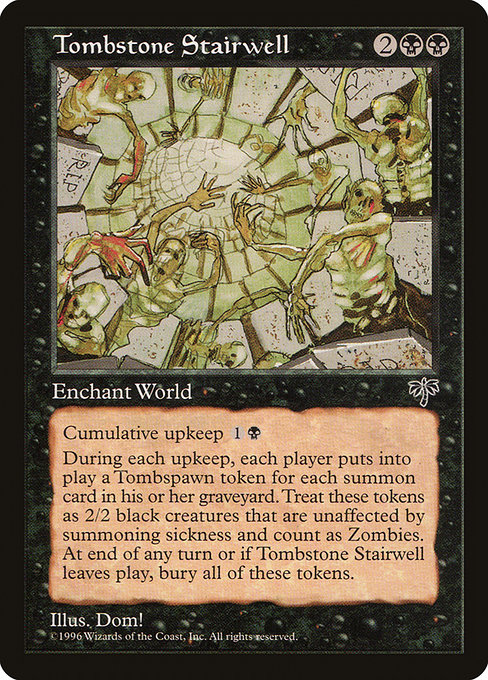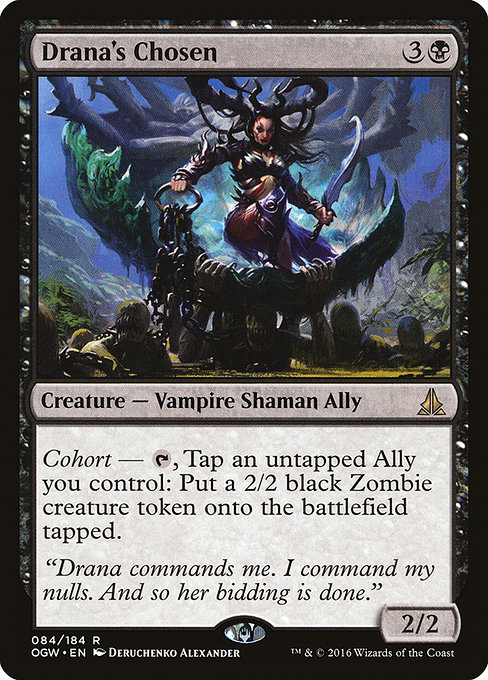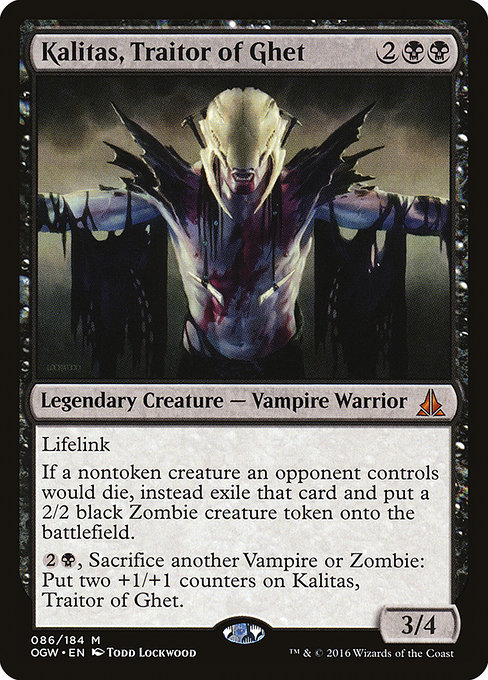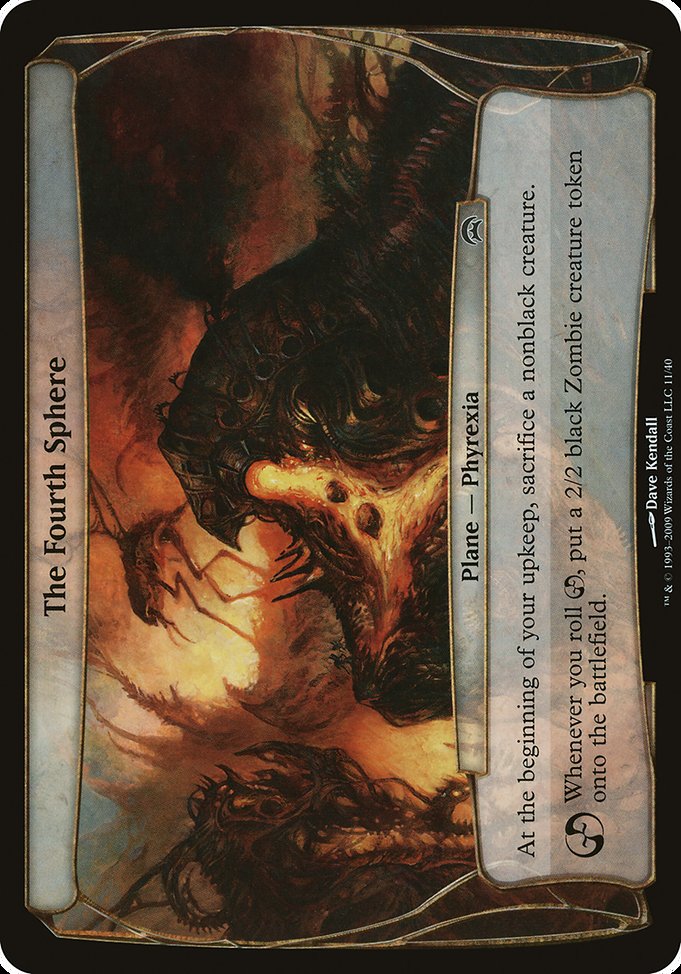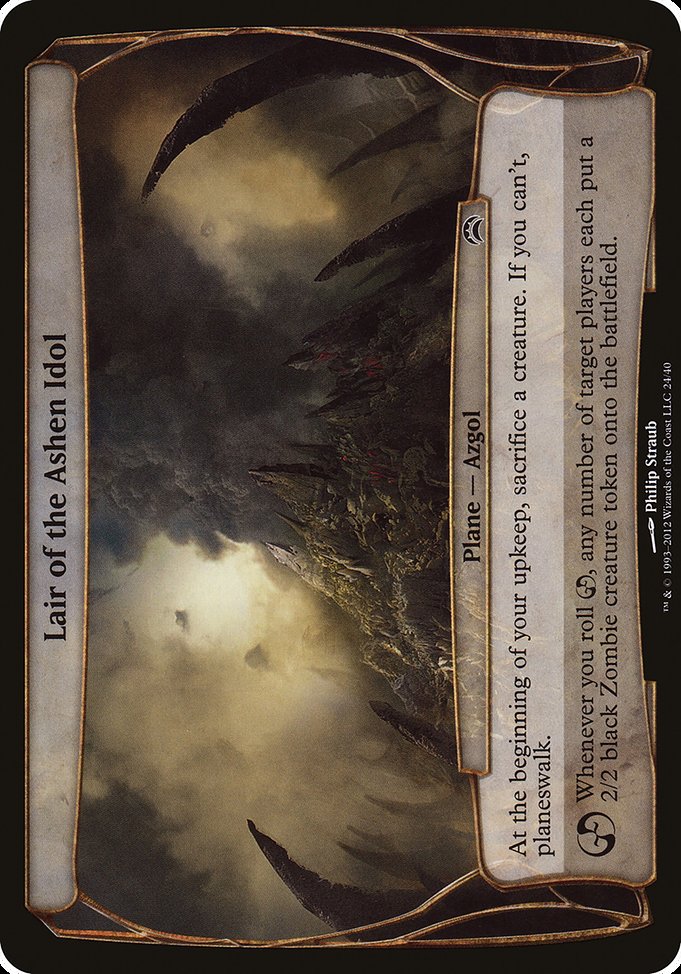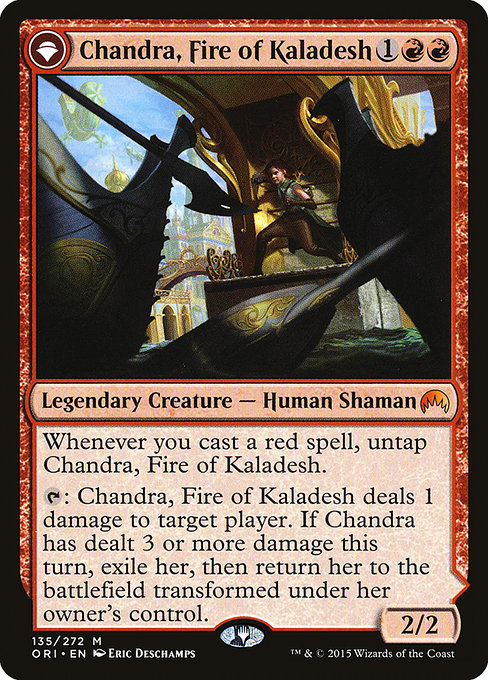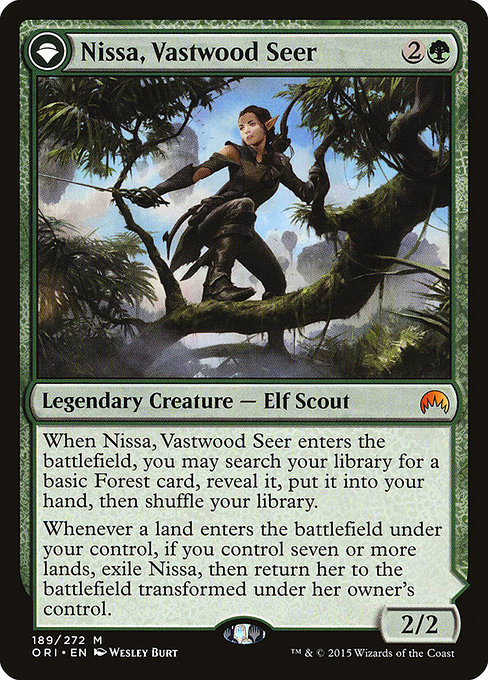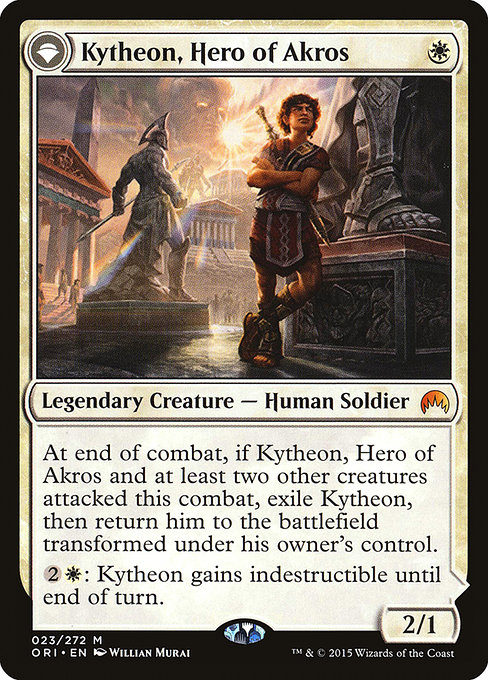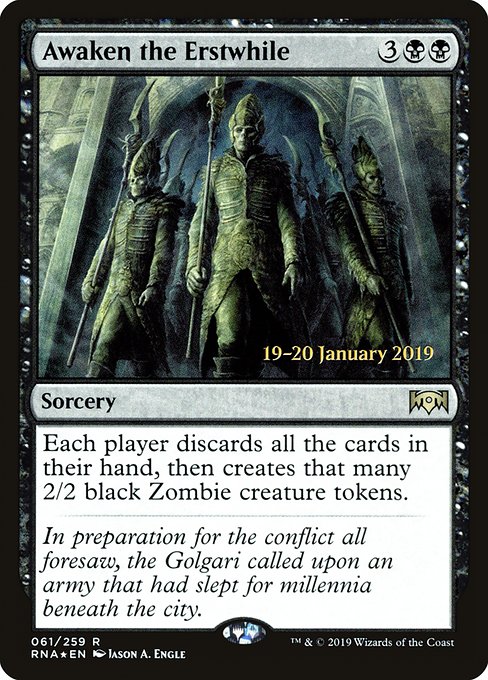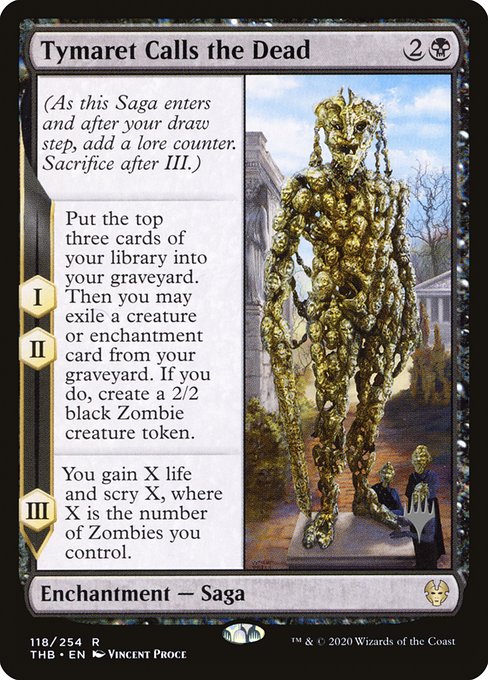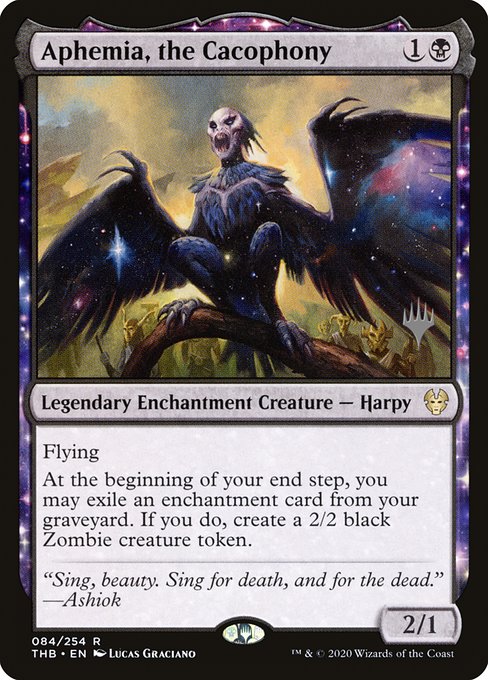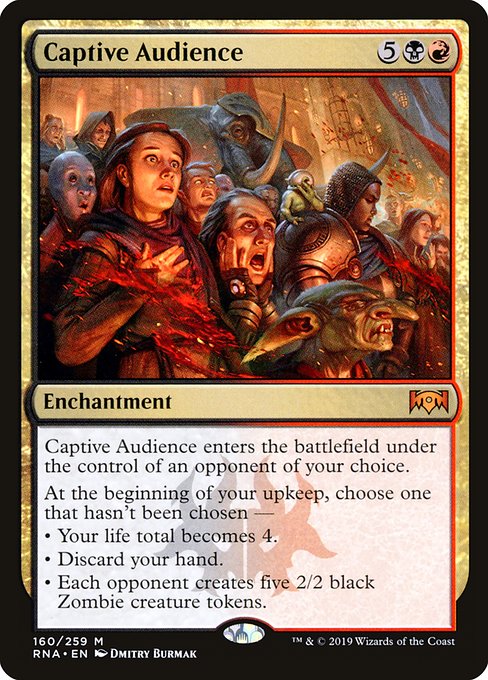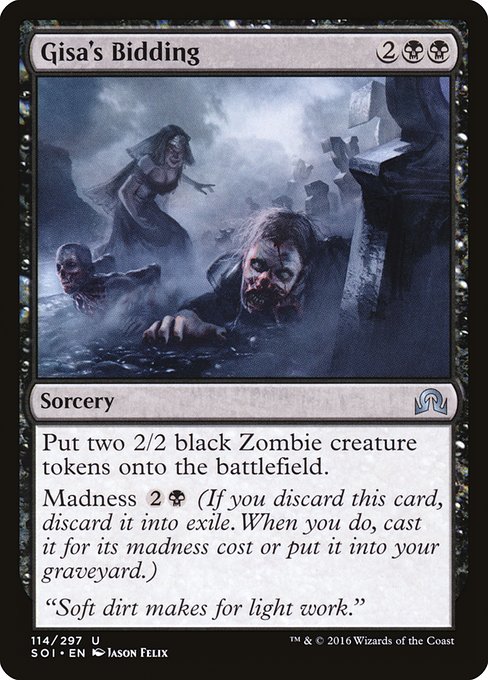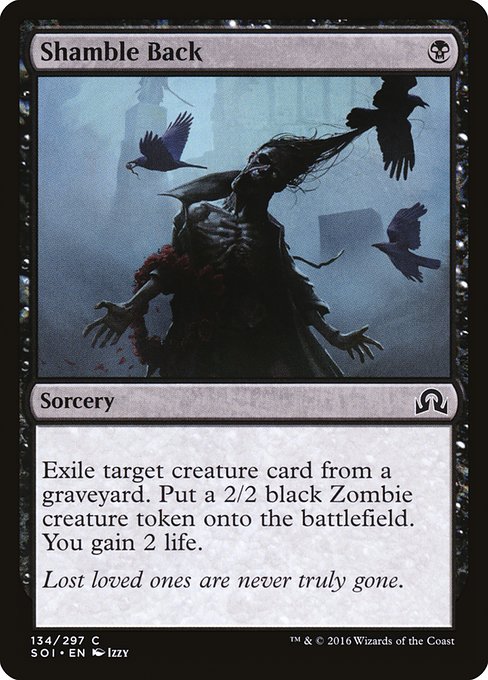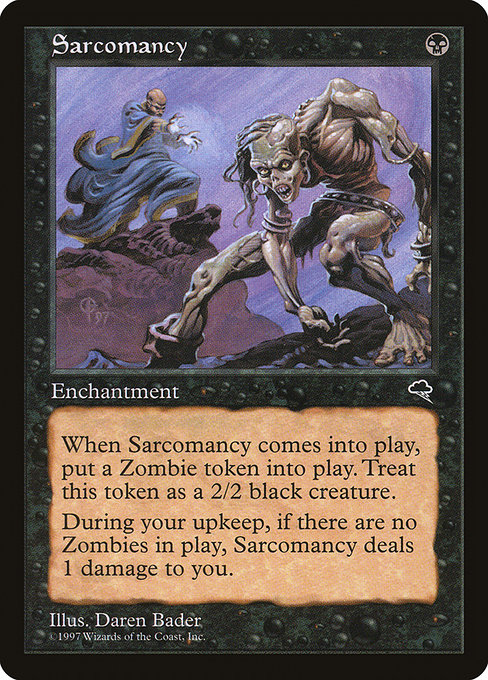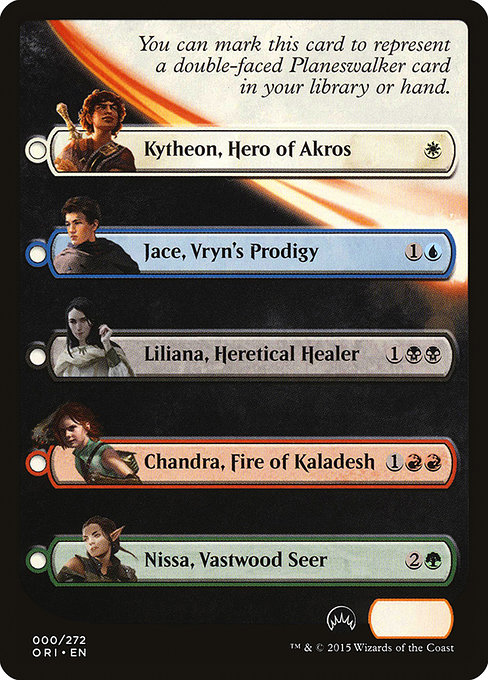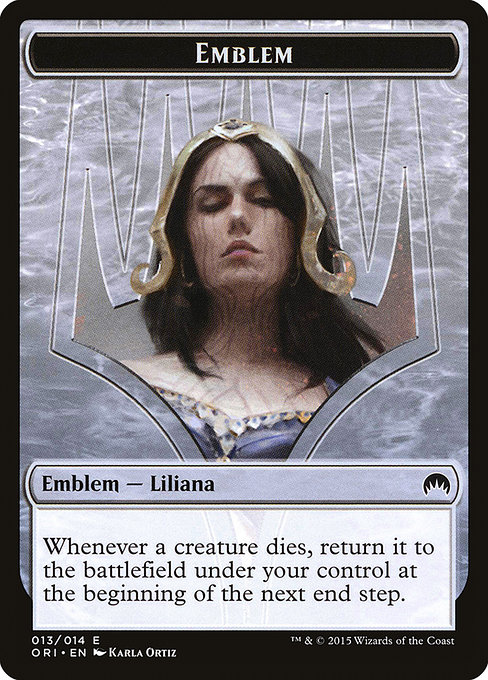Liliana, guérisseuse hérétique // Liliana, nécromancienne provocatrice
//
Créature légendaire : humain et clerc // Planeswalker : - Liliana
Lien de vieÀ chaque fois qu'une autre créature non-jeton que vous contrôlez meurt, exilez Liliana, guérisseuse hérétique, puis renvoyez-la sur le champ de bataille, transformée, sous le contrôle de son propriétaire. Si vous faites ainsi, mettez sur le champ de bataille un jeton de créature 2/2 noire Zombie. // +2 : Chaque joueur se défausse d'une carte.-X : Renvoyez sur le champ de bataille, depuis votre cimetière, une carte de créature non-légendaire avec un coût converti de mana de X ciblée.-8 : Vous gagnez un emblème avec « À chaque fois qu'une créature meurt, renvoyez-la sur le champ de bataille, sous votre contrôle, au début de la prochaine étape de fin ».
2/3
standard
future
historic
gladiator
pioneer
explorer
modern
legacy
pauper
vintage
penny
commander
brawl
alchemy
paupercommander
duel
oldschool
premodern
Rulings
A Magic Origins planeswalker that enters the battlefield because of the ability of its front face will enter with loyalty counters as normal.
In some rare cases, a spell or ability may cause one of these five cards to transform while it’s a creature (front face up) on the battlefield. If this happens, the resulting planeswalker won’t have any loyalty counters on it and will subsequently be put into its owner’s graveyard.
If a double-faced card is manifested, it will be put onto the battlefield face down (this is also true if it’s put onto the battlefield face down some other way). Note that “face down” is not synonymous with “with its back face up.” A manifested double-faced card is a 2/2 creature with no name, mana cost, creature types, or abilities. While face down, it can’t transform. If the front face of a manifested double-faced card is a creature card, you can turn it face up by paying its mana cost. If you do, its front face will be up. A double-faced card on the battlefield can’t be turned face down.
A double-faced card enters the battlefield with its front face up by default, unless a spell or ability instructs you to put it onto the battlefield transformed, in which case it enters with its back face up.
The converted mana cost of a double-faced card not on the battlefield is the converted mana cost of its front face.
You can activate one of the planeswalker’s loyalty abilities the turn it enters the battlefield. However, you may do so only during one of your main phases when the stack is empty. For example, if the planeswalker enters the battlefield during combat, there will be an opportunity for your opponent to remove it before you can activate one of its abilities.
The back face of a double-faced card (in the case of Magic Origins, the planeswalker face) can’t be cast.
When Liliana, Defiant Necromancer’s first ability resolves, first you choose a card to discard, then each other player in turn order chooses a card to discard, then all those cards are discarded simultaneously. No one sees what the other players are discarding before deciding which card to discard.
Each face of a double-faced card has its own set of characteristics: name, types, subtypes, power and toughness, loyalty, abilities, and so on. While a double-faced card is on the battlefield, consider only the characteristics of the face that’s currently up. The other set of characteristics is ignored. While a double-faced card isn’t on the battlefield, consider only the characteristics of its front face.
If multiple nontoken creatures you control die, then Liliana, Heretical Healer’s ability will trigger that many times. However, since Liliana can be exiled and returned to the battlefield only once, only the first ability to resolve will create a Zombie token. The other abilities will resolve but won’t do anything.
The back face of a double-faced card doesn’t have a mana cost. A double-faced permanent with its back face up has a converted mana cost equal to the converted mana cost of its front face. Each back face has a color indicator that defines its color.
For more information on double-faced cards, see the Shadows over Innistrad mechanics article (http://magic.wizards.com/en/articles/archive/feature/shadows-over-innistrad-mechanics).
You can control two of this permanent, one front-face up and the other back-face up, at the same time.
In some rare cases, a spell or ability may cause one of these five cards to transform while it’s a creature (front face up) on the battlefield. If this happens, the resulting planeswalker won’t have any loyalty counters on it and will subsequently be put into its owner’s graveyard.
If a double-faced card is manifested, it will be put onto the battlefield face down (this is also true if it’s put onto the battlefield face down some other way). Note that “face down” is not synonymous with “with its back face up.” A manifested double-faced card is a 2/2 creature with no name, mana cost, creature types, or abilities. While face down, it can’t transform. If the front face of a manifested double-faced card is a creature card, you can turn it face up by paying its mana cost. If you do, its front face will be up. A double-faced card on the battlefield can’t be turned face down.
A double-faced card enters the battlefield with its front face up by default, unless a spell or ability instructs you to put it onto the battlefield transformed, in which case it enters with its back face up.
The converted mana cost of a double-faced card not on the battlefield is the converted mana cost of its front face.
You can activate one of the planeswalker’s loyalty abilities the turn it enters the battlefield. However, you may do so only during one of your main phases when the stack is empty. For example, if the planeswalker enters the battlefield during combat, there will be an opportunity for your opponent to remove it before you can activate one of its abilities.
The back face of a double-faced card (in the case of Magic Origins, the planeswalker face) can’t be cast.
When Liliana, Defiant Necromancer’s first ability resolves, first you choose a card to discard, then each other player in turn order chooses a card to discard, then all those cards are discarded simultaneously. No one sees what the other players are discarding before deciding which card to discard.
Each face of a double-faced card has its own set of characteristics: name, types, subtypes, power and toughness, loyalty, abilities, and so on. While a double-faced card is on the battlefield, consider only the characteristics of the face that’s currently up. The other set of characteristics is ignored. While a double-faced card isn’t on the battlefield, consider only the characteristics of its front face.
If multiple nontoken creatures you control die, then Liliana, Heretical Healer’s ability will trigger that many times. However, since Liliana can be exiled and returned to the battlefield only once, only the first ability to resolve will create a Zombie token. The other abilities will resolve but won’t do anything.
The back face of a double-faced card doesn’t have a mana cost. A double-faced permanent with its back face up has a converted mana cost equal to the converted mana cost of its front face. Each back face has a color indicator that defines its color.
For more information on double-faced cards, see the Shadows over Innistrad mechanics article (http://magic.wizards.com/en/articles/archive/feature/shadows-over-innistrad-mechanics).
You can control two of this permanent, one front-face up and the other back-face up, at the same time.
Rulings
A Magic Origins planeswalker that enters the battlefield because of the ability of its front face will enter with loyalty counters as normal.
In some rare cases, a spell or ability may cause one of these five cards to transform while it’s a creature (front face up) on the battlefield. If this happens, the resulting planeswalker won’t have any loyalty counters on it and will subsequently be put into its owner’s graveyard.
If a double-faced card is manifested, it will be put onto the battlefield face down (this is also true if it’s put onto the battlefield face down some other way). Note that “face down” is not synonymous with “with its back face up.” A manifested double-faced card is a 2/2 creature with no name, mana cost, creature types, or abilities. While face down, it can’t transform. If the front face of a manifested double-faced card is a creature card, you can turn it face up by paying its mana cost. If you do, its front face will be up. A double-faced card on the battlefield can’t be turned face down.
A double-faced card enters the battlefield with its front face up by default, unless a spell or ability instructs you to put it onto the battlefield transformed, in which case it enters with its back face up.
The converted mana cost of a double-faced card not on the battlefield is the converted mana cost of its front face.
You can activate one of the planeswalker’s loyalty abilities the turn it enters the battlefield. However, you may do so only during one of your main phases when the stack is empty. For example, if the planeswalker enters the battlefield during combat, there will be an opportunity for your opponent to remove it before you can activate one of its abilities.
The back face of a double-faced card (in the case of Magic Origins, the planeswalker face) can’t be cast.
When Liliana, Defiant Necromancer’s first ability resolves, first you choose a card to discard, then each other player in turn order chooses a card to discard, then all those cards are discarded simultaneously. No one sees what the other players are discarding before deciding which card to discard.
Each face of a double-faced card has its own set of characteristics: name, types, subtypes, power and toughness, loyalty, abilities, and so on. While a double-faced card is on the battlefield, consider only the characteristics of the face that’s currently up. The other set of characteristics is ignored. While a double-faced card isn’t on the battlefield, consider only the characteristics of its front face.
If multiple nontoken creatures you control die, then Liliana, Heretical Healer’s ability will trigger that many times. However, since Liliana can be exiled and returned to the battlefield only once, only the first ability to resolve will create a Zombie token. The other abilities will resolve but won’t do anything.
The back face of a double-faced card doesn’t have a mana cost. A double-faced permanent with its back face up has a converted mana cost equal to the converted mana cost of its front face. Each back face has a color indicator that defines its color.
For more information on double-faced cards, see the Shadows over Innistrad mechanics article (http://magic.wizards.com/en/articles/archive/feature/shadows-over-innistrad-mechanics).
You can control two of this permanent, one front-face up and the other back-face up, at the same time.
In some rare cases, a spell or ability may cause one of these five cards to transform while it’s a creature (front face up) on the battlefield. If this happens, the resulting planeswalker won’t have any loyalty counters on it and will subsequently be put into its owner’s graveyard.
If a double-faced card is manifested, it will be put onto the battlefield face down (this is also true if it’s put onto the battlefield face down some other way). Note that “face down” is not synonymous with “with its back face up.” A manifested double-faced card is a 2/2 creature with no name, mana cost, creature types, or abilities. While face down, it can’t transform. If the front face of a manifested double-faced card is a creature card, you can turn it face up by paying its mana cost. If you do, its front face will be up. A double-faced card on the battlefield can’t be turned face down.
A double-faced card enters the battlefield with its front face up by default, unless a spell or ability instructs you to put it onto the battlefield transformed, in which case it enters with its back face up.
The converted mana cost of a double-faced card not on the battlefield is the converted mana cost of its front face.
You can activate one of the planeswalker’s loyalty abilities the turn it enters the battlefield. However, you may do so only during one of your main phases when the stack is empty. For example, if the planeswalker enters the battlefield during combat, there will be an opportunity for your opponent to remove it before you can activate one of its abilities.
The back face of a double-faced card (in the case of Magic Origins, the planeswalker face) can’t be cast.
When Liliana, Defiant Necromancer’s first ability resolves, first you choose a card to discard, then each other player in turn order chooses a card to discard, then all those cards are discarded simultaneously. No one sees what the other players are discarding before deciding which card to discard.
Each face of a double-faced card has its own set of characteristics: name, types, subtypes, power and toughness, loyalty, abilities, and so on. While a double-faced card is on the battlefield, consider only the characteristics of the face that’s currently up. The other set of characteristics is ignored. While a double-faced card isn’t on the battlefield, consider only the characteristics of its front face.
If multiple nontoken creatures you control die, then Liliana, Heretical Healer’s ability will trigger that many times. However, since Liliana can be exiled and returned to the battlefield only once, only the first ability to resolve will create a Zombie token. The other abilities will resolve but won’t do anything.
The back face of a double-faced card doesn’t have a mana cost. A double-faced permanent with its back face up has a converted mana cost equal to the converted mana cost of its front face. Each back face has a color indicator that defines its color.
For more information on double-faced cards, see the Shadows over Innistrad mechanics article (http://magic.wizards.com/en/articles/archive/feature/shadows-over-innistrad-mechanics).
You can control two of this permanent, one front-face up and the other back-face up, at the same time.
Votre collection ? vos decks ?
Envie de gérer votre collection et/ou créer des decks ?
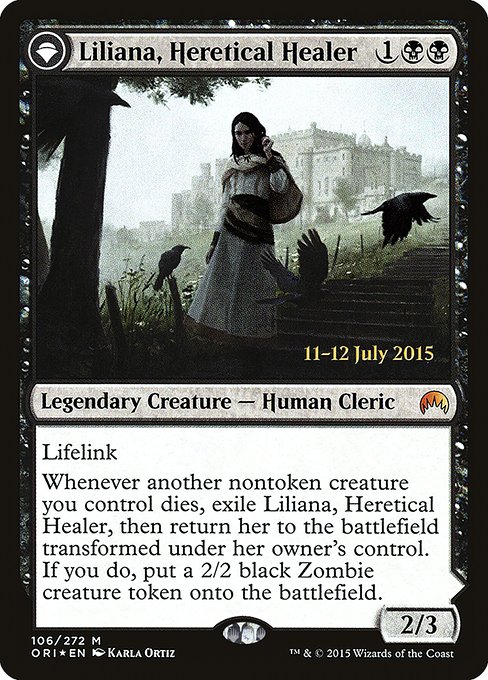


 0
0
 2.15€
2.15€



